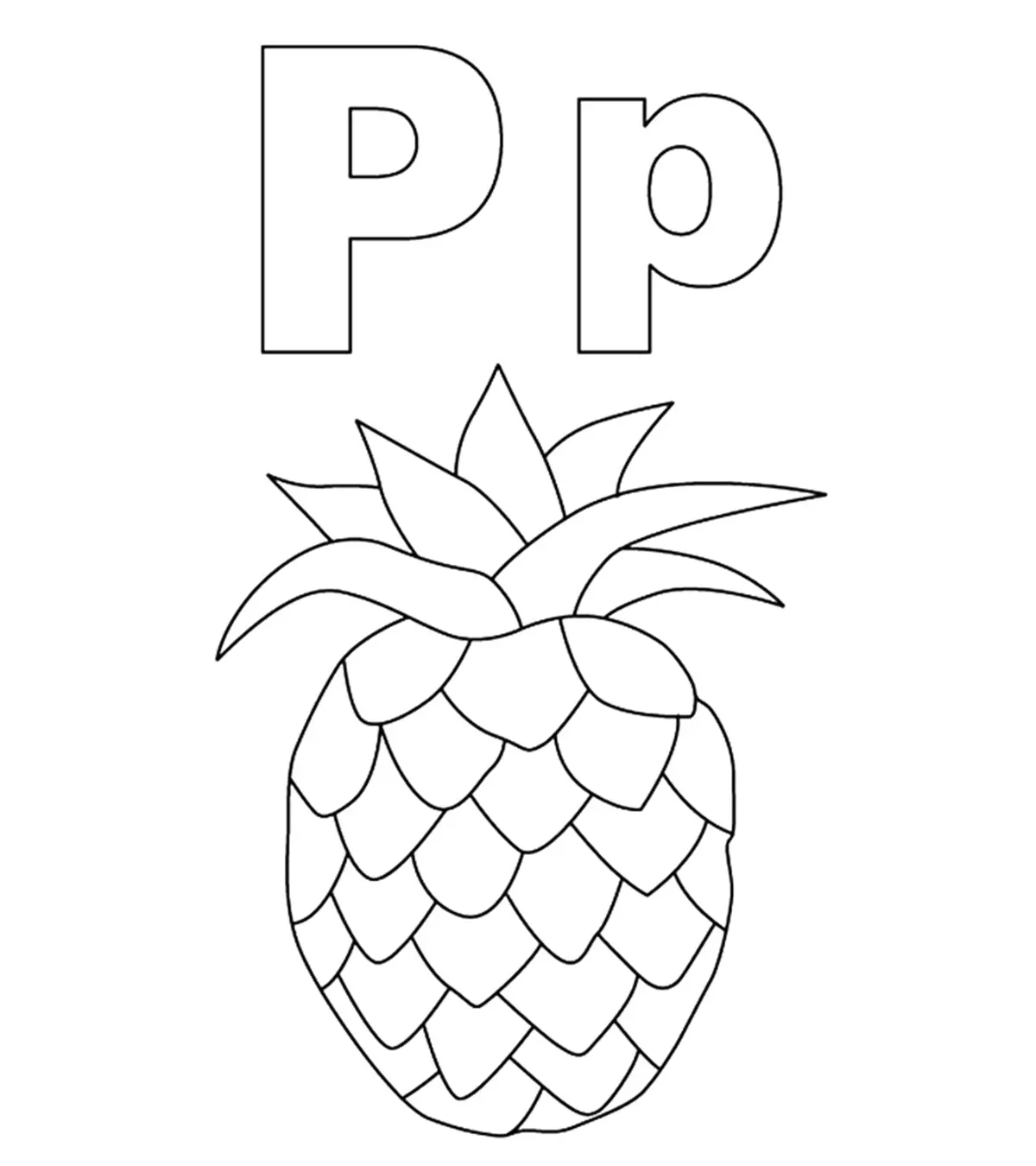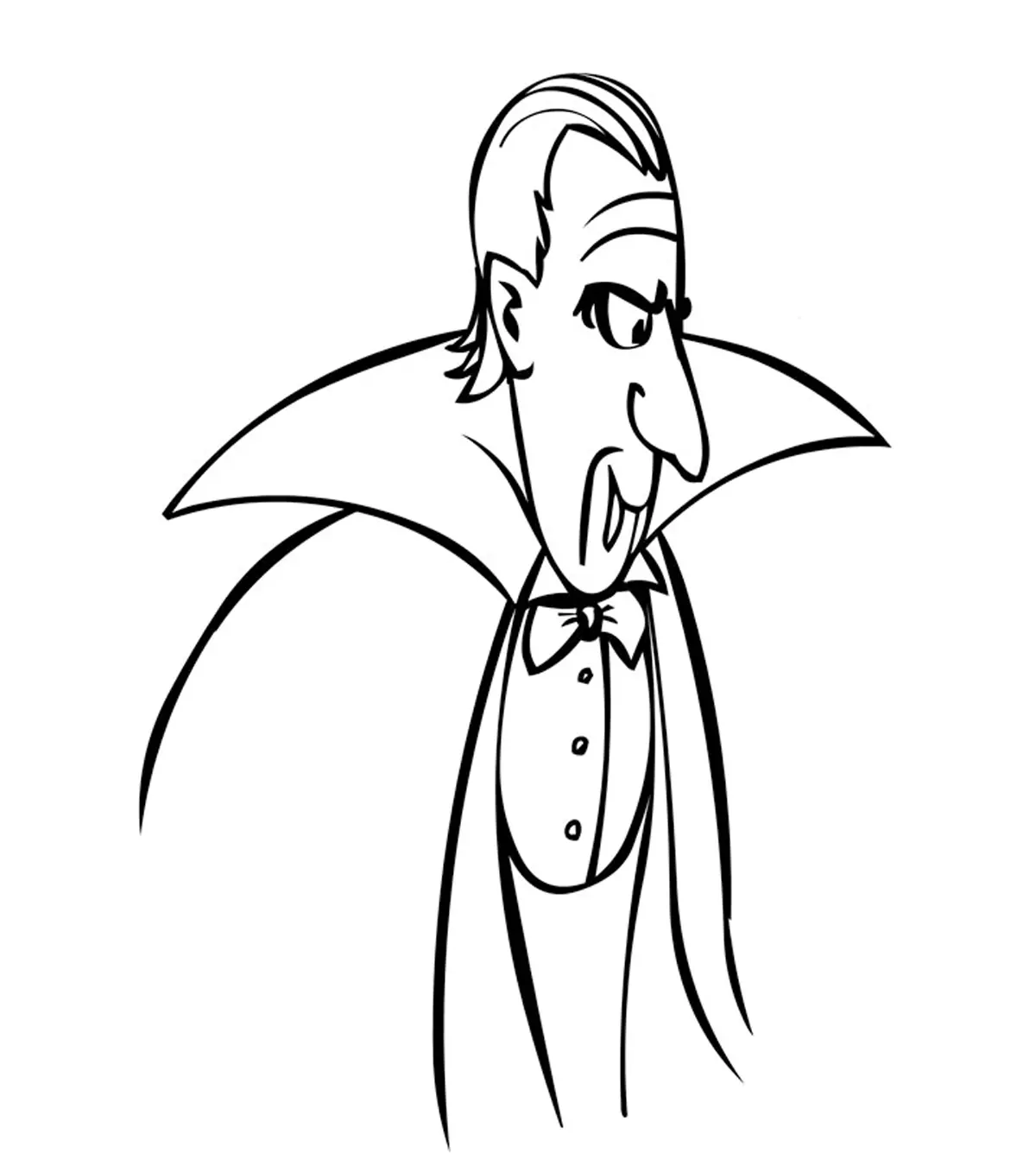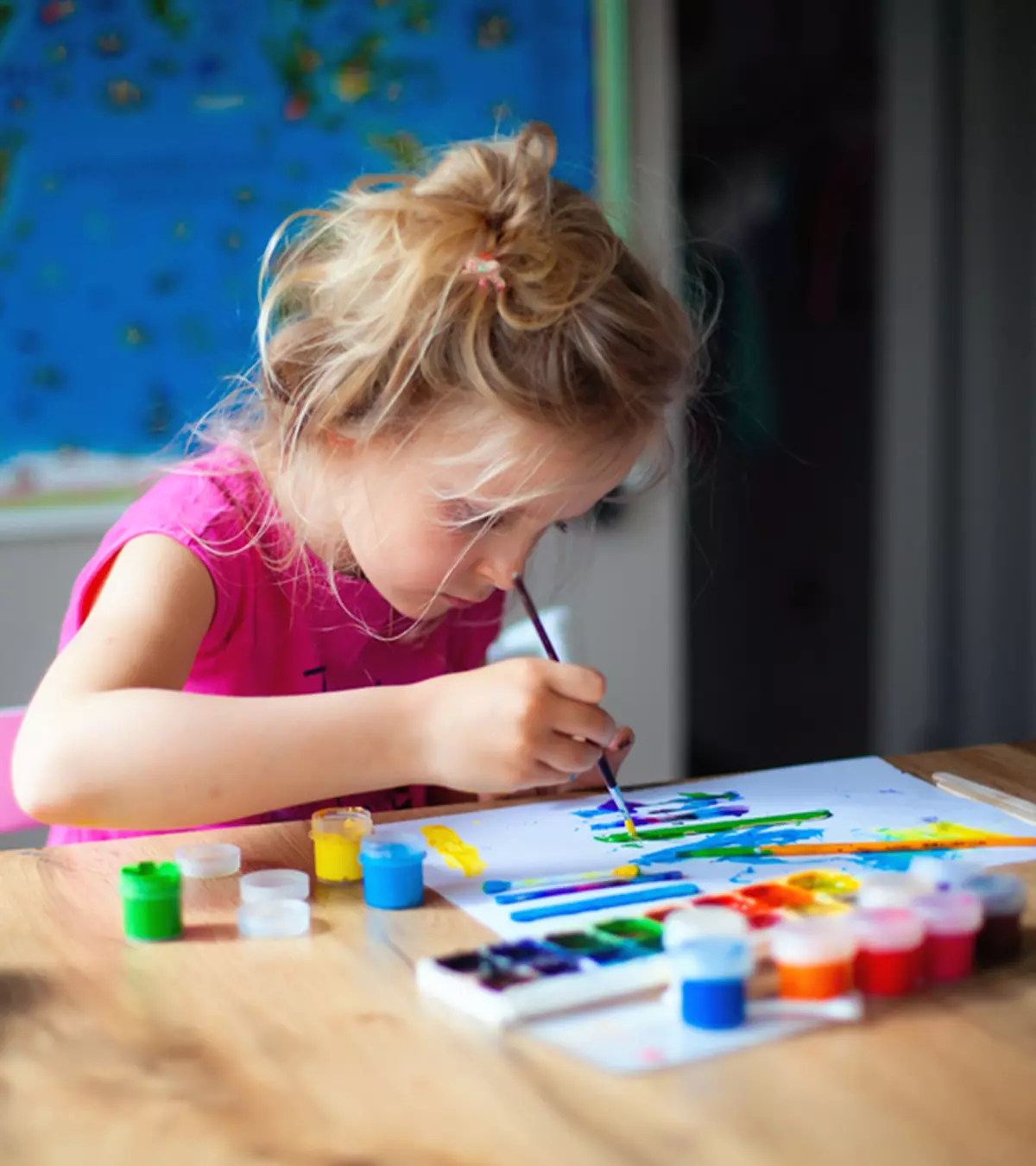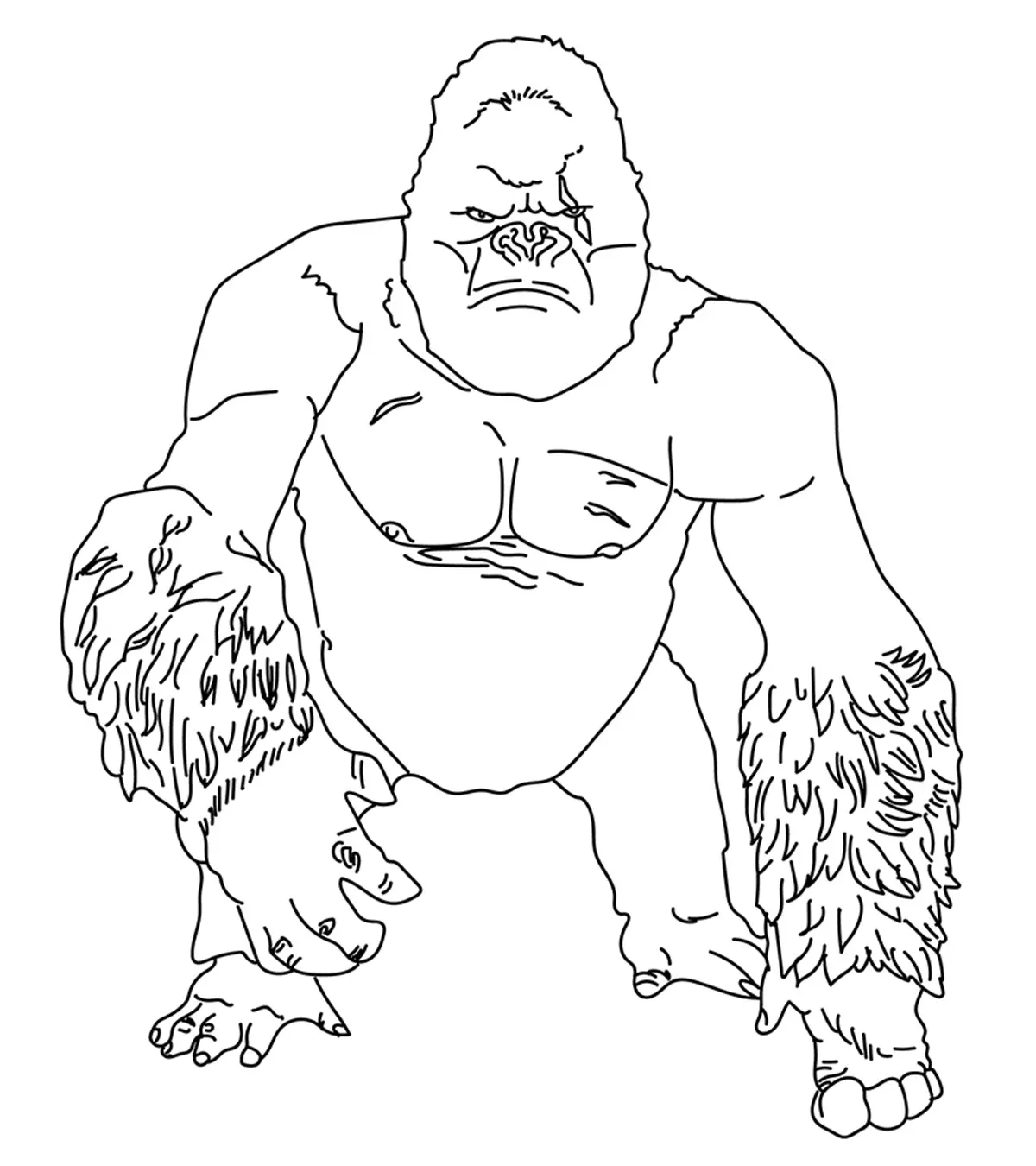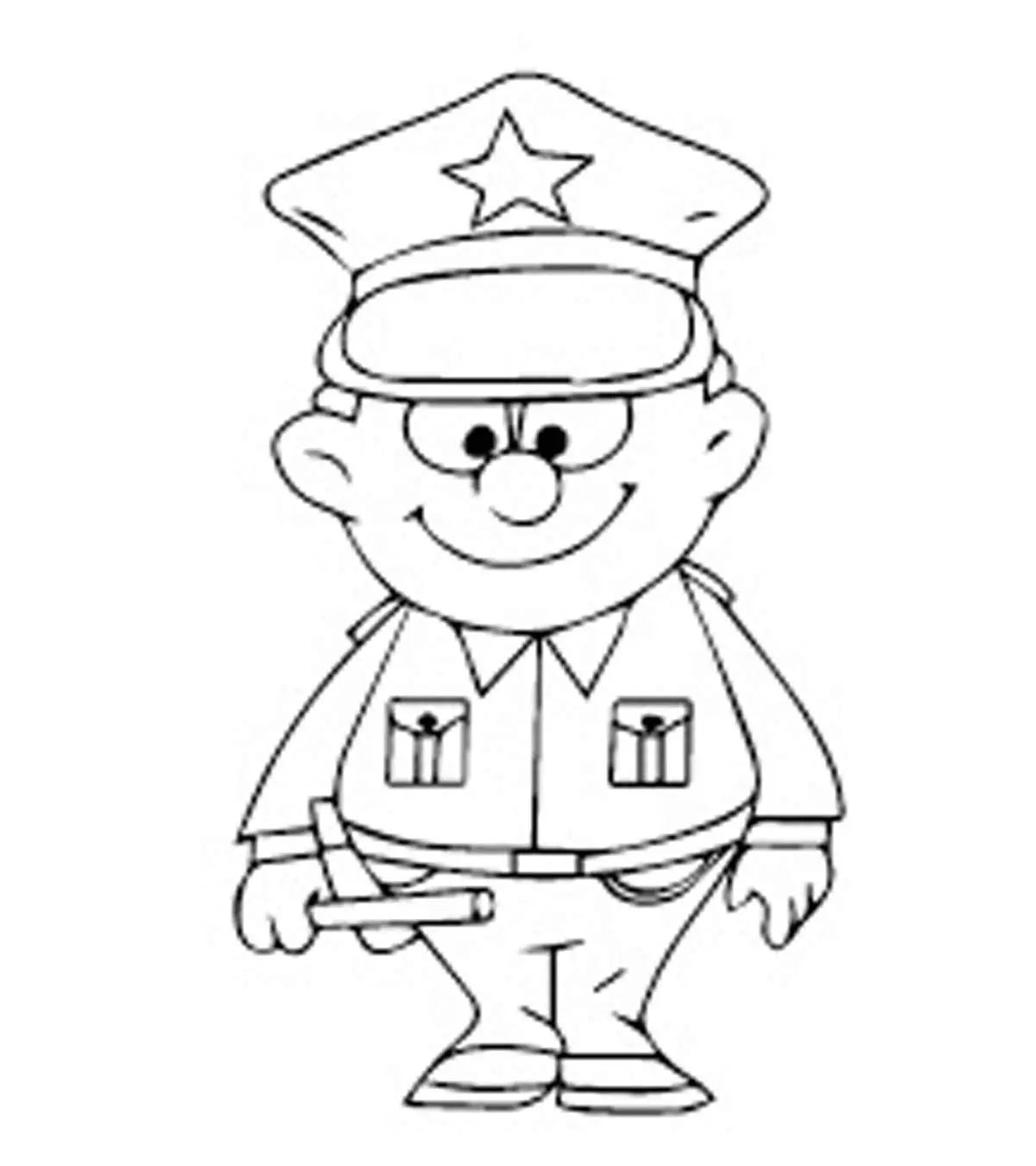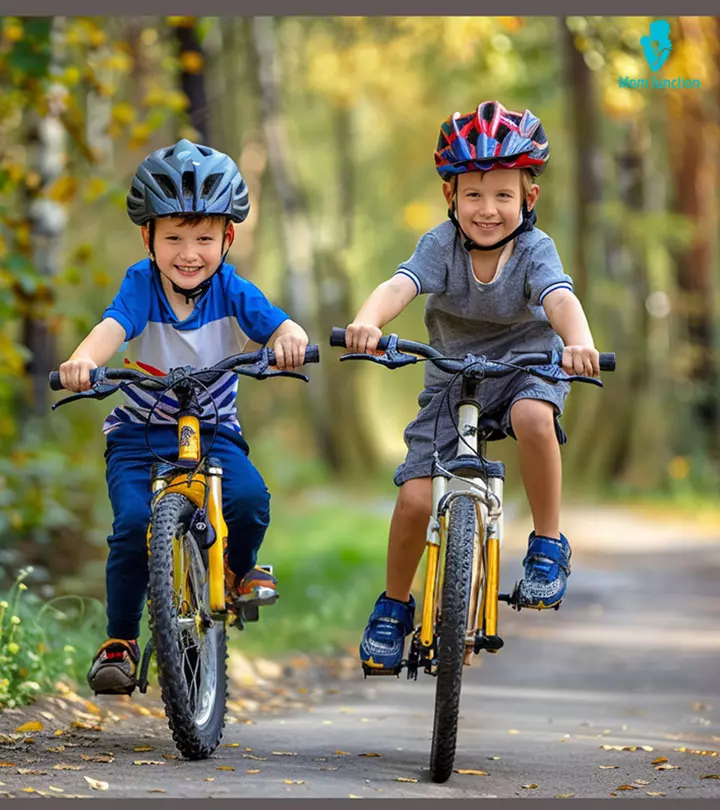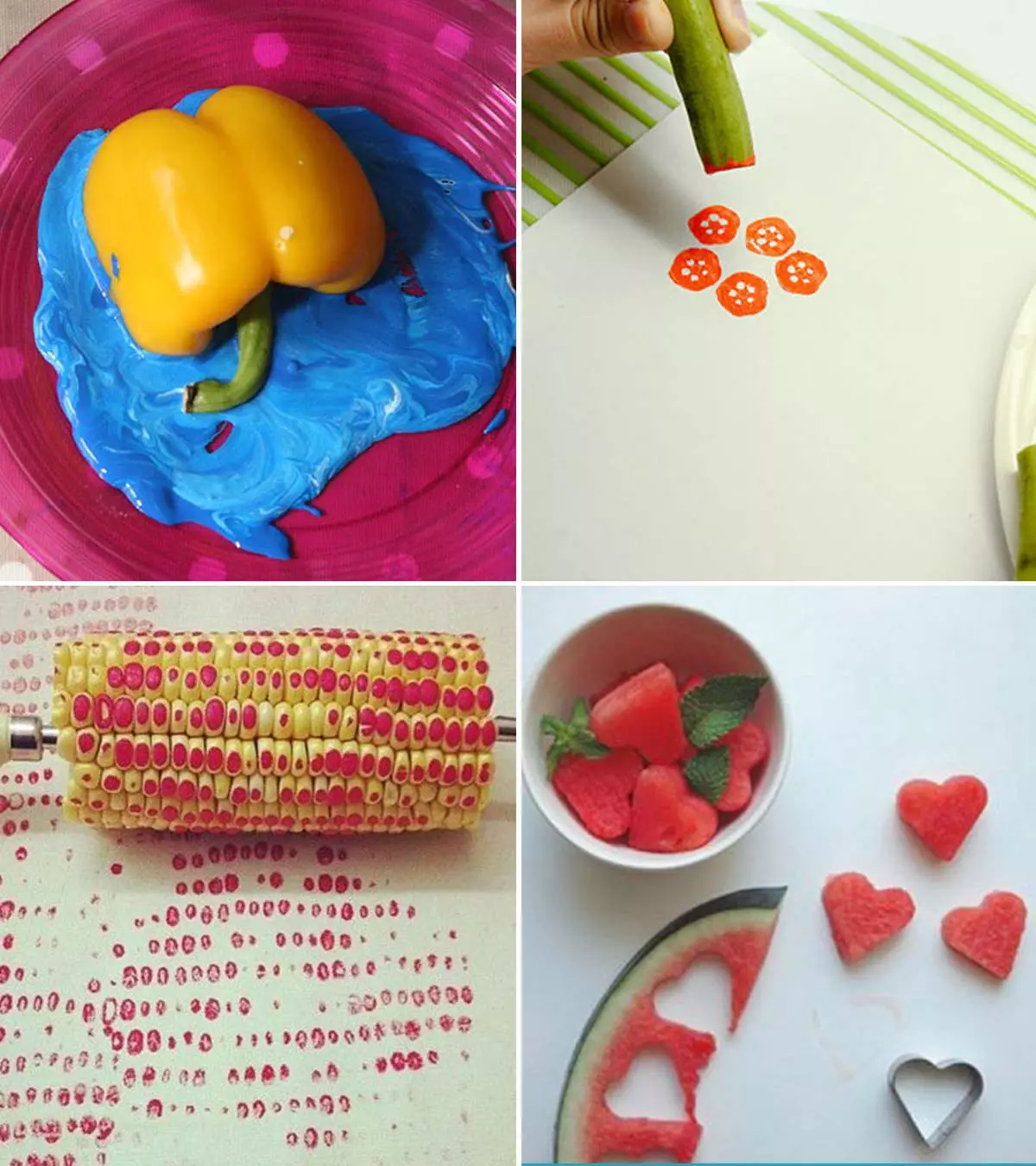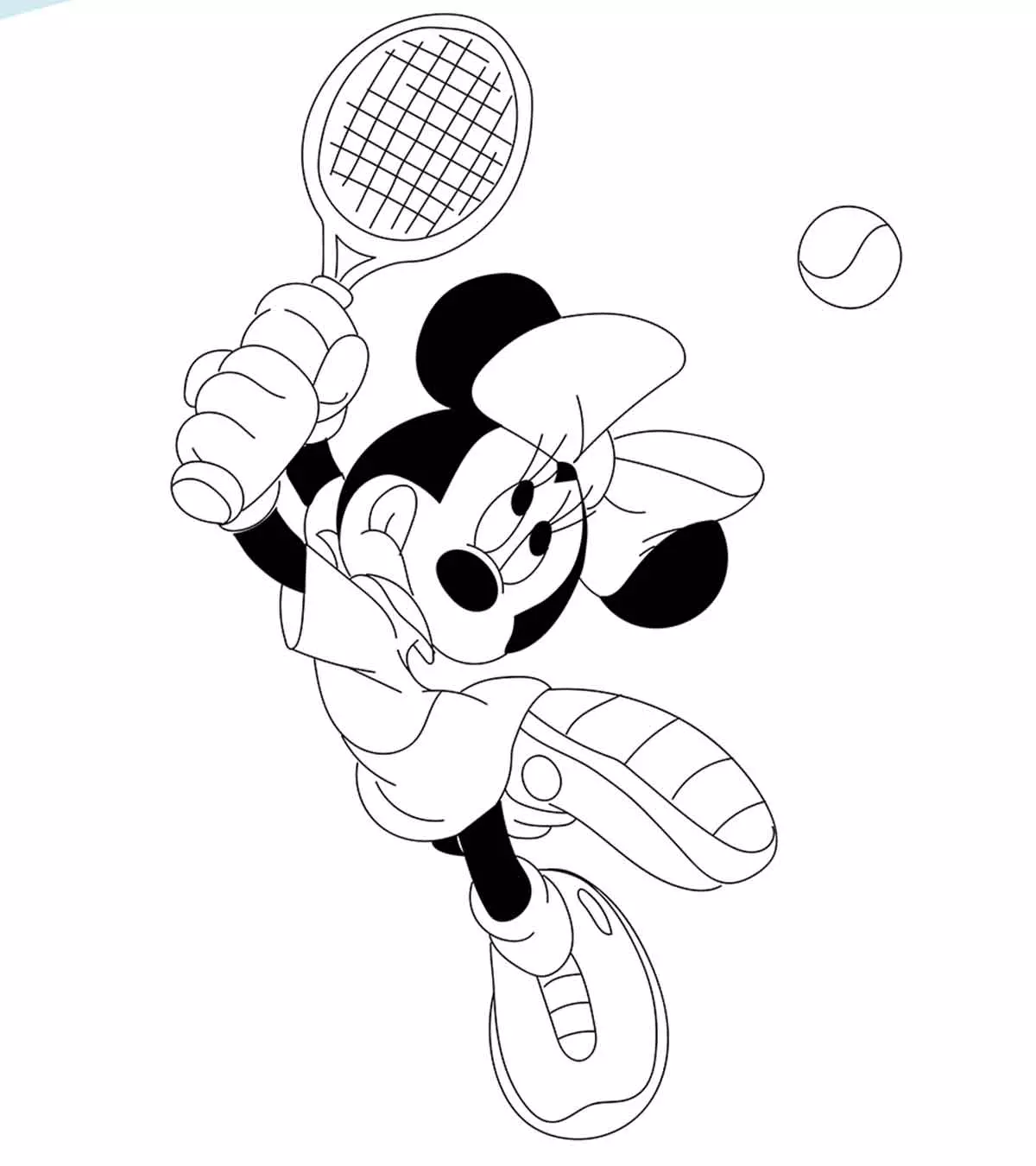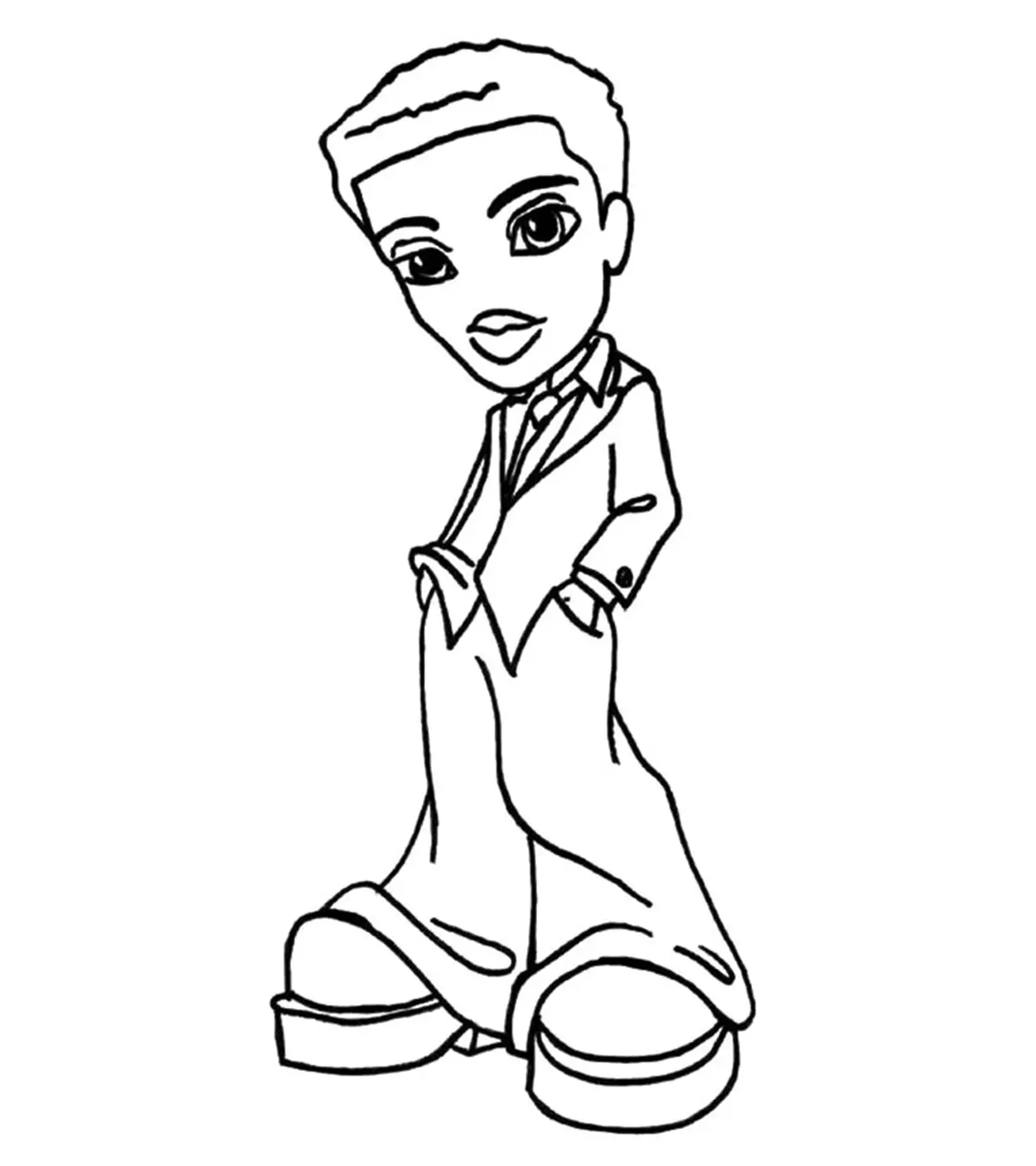
Image: Shutterstock
As most babies and toddlers enjoy splashing around the bathtub, it may be a good idea to combine playtime with some interesting water activities for toddlers. These activities can help release their suppressed energy, which may calm them down, and help reduce stress. They also play a crucial role in sensory development and cognitive growth, as they allow children to explore textures, temperatures, and more. Research indicates that through water play, children naturally investigate principles of physics. When they pour, splash, and observe the flow of water, it helps them understand concepts such as motion and flow (5). Read this post as we bring exciting water activities for babies and toddlers. You may pick any of these activities based on your baby’s age and capabilities.

Key Pointers
- Babies older than eight months can enjoy different water activities.
- Indulging in water activities can hone their sensory-motor skills and eye-hand coordination.
- Filling water in cups and bowls, watering plants, and more fun water activities for babies and toddlers as you scroll through.
Precautions To Take For Safe Water Play
Before jumping into the activities, let’s have a look at some safety measures you must follow while allowing your kids to play with or in water.
- It’s better to conduct most water activities outdoors so that there won’t be any mess inside the house.
- Prepare a designated area for water play to minimize mess, and ensure all necessary materials are within reach.
- No matter how simple the water activity is, never leave your kids unattended. Always supervise their activities.
- Keep the water level low, maximum one or two inches deep.
- Ensure babies are older than eight months, have good head and neck control, sit, or stand on their own before involving them in any water play.
- Try to avoid small items like stones, pebbles, marbles, and water marbles that babies can put in the mouth or swallow.
- Also, avoid any sharp objects.
- Use kid-friendly soaps and avoid harsh detergents.
- Use food colors as they may not cause any harm to the toddler’s delicate skin.
- Make sure that the kids don’t drink water or swallow any items involved in the activity.
- Use warm water, if possible, for all kinds of water activities.
 Caution
Caution25+ Water Activities For Babies And Toddlers
Children can feel bored quickly if they are not regularly engaged with fresh and exciting challenges. Below is a list of water activities designed to keep your children entertained while ensuring they stay safe and have fun in the water.
1. Water-filling activity
This is a simple water game where you can involve toddlers and babies who can sit on their own and have a good grip.

You will need
Two flat containers, scooping objects like measuring cups, scoops, medicine droppers, small buckets or mugs, colanders, etc.
How to play
- Take flat containers or tubs, keep them side by side and fill water in one box to its brim.
- Give a scooping tool to your toddler and ask them to transfer the water from one container to the other. Change the scoopers so that they don’t feel bored with the same thing.
- This is an activity that babies can enjoy for hours. Once the container is full, ask them to repeat the same from the second container to the first.
Developmental benefits
- Scooping and pouring water can develop children’s fine motor skills as they strengthen their hand muscles.
- Transferring water from one container to another can help improve hand-eye coordination and help toddlers understand cause and effect.
Safety tip
Allow children to play this only under adult supervision to prevent water from splashing onto slippery surfaces.
2. Bubble play
A simple but exciting activity for kids is water bubble play. It is simple to set-up but would engage your kids for hours together.

You will need
Water tub, liquid bath soap, bath toys, water, and a towel
How to play
Fill water in the tub, add the liquid soap, and whirl it a little to create foam. Leave your babies and kids in it, and let them explore it while you supervise.
Developmental benefits
- Feeling soft bubbles and water textures can enhance children’s sensory awareness.
- When children describe bubble movements using words like ‘pop’ or ‘float’ it helps expand vocabulary.
Safety tip
Opt for a tear-free, baby-safe soap to prevent eye irritation.
 Point to consider
Point to consider3. Watering plants
This activity is also an opportunity to teach your kids about nature and the environment around them. It allows them to water plants, know what is overwatering, how often plants need water, and which plants require what kind of care.
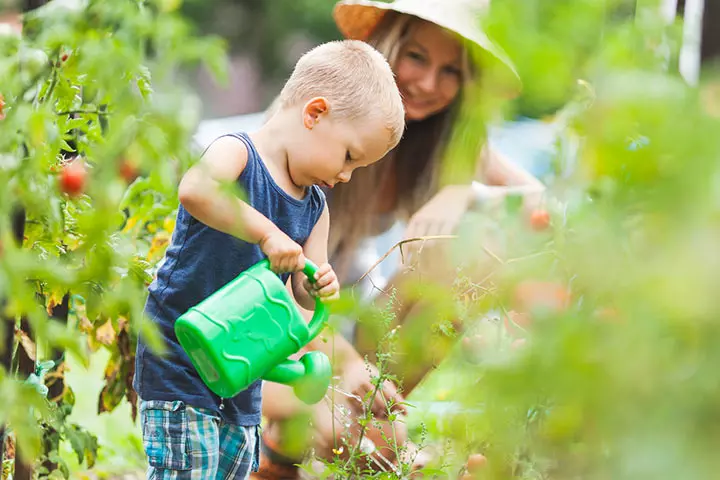
You will need
A small watering can or a small bucket and a mug
How to play
- Take your kids around your garden and introduce them to the different plants you have in there. If they’re already familiar with the plants, go straight to the activity by handing them the water can.
- You can also show them how to do it so that they won’t overwater the plant. Supervision is necessary while they’re watering the plants.
- If the water can is empty, ask them to refill it and repeat it to the rest of the plants.
Developmental benefits
- Caring for plants can help children develop a sense of ownership and concern for living things.
- Carrying a small watering bucket can help enhance children’s gross motor skills as it develops their balance and coordination.
Safety tip
Ensure children only handle safe, non-toxic plants in case of accidental ingestion.
4. Pool ball play
Another simple outdoor water activity for toddlers is the pool ball play. It’s one of the most fun summer outdoor games for toddlers who love spending time in cold water. You can also include your babies who can sit in this activity.
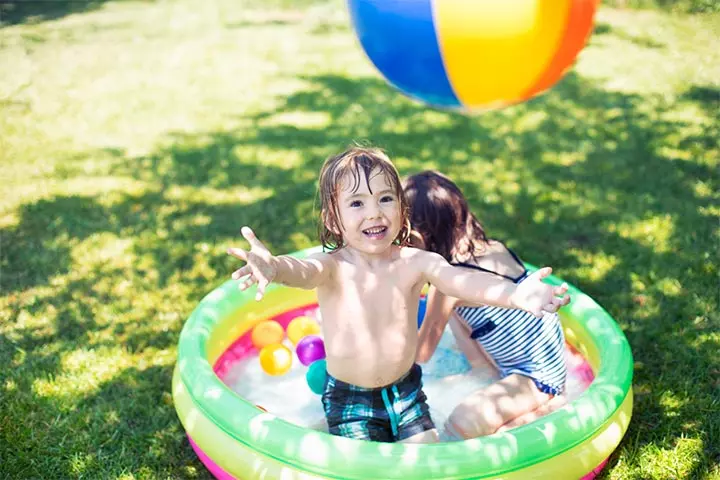
You will need
A medium-sized play pool, a bag of colorful balls, and water.
How to play
Find a shaded, cool place in your garden to place the play pool. Fill it with water and add the balls.
Leave your kids in it with minimal dressing, and they will enjoy their pool game. If there are 2-3 kids, it would be more fun than a single child playing all alone. If the child is alone, you can join in if there is space.
Developmental benefits
- Reaching for and tossing balls can help strengthen children’s muscles.
- Playing with other children can help them learn turn-taking and cooperation.
Safety tip
Use a shallow pool and ensure constant supervision.
5. Squeeze the sponge
This is an easy water play set-up in which both babies and toddlers can be involved. You can teach them a variety of things within this activity.
You will need
Two flat water tubs, some thin sponges, water, and some small toys.
How to play
Fill one container with water and keep the other next to it. Add sponges to the water-filled container.
Show the kid how to dip the sponge in water and squeeze it in another tub to release the water. Ask them to repeat the same and transfer the entire water from one container to the other.
Other things you can do in the activity
- Observe how the sponges are floating
- Stack the sponges in water, and still, they float
- You can ask them to sort the sponges based on their color
- Place some small toys over the floating sponges and see which ones are sinking.
Instead of sponges, you can also use pompoms. As they are available in different shades, the activity becomes more colorful.
Developmental benefits
- Squeezing sponges can help children develop grip and coordination.
- Observing how sponges absorb and release water can boost their cognitive understanding.
Safety tip
Choose large, non-toxic sponges to prevent choking hazards.
6. Water splashing with fly swatters
Kids love to splash water, and when you involve them in an activity that includes water splashing, there is no end to their excitement. The fly swatters activity is one such fun game that keeps your kids entertained for hours.
You will need
Colorful fly swatters, flat water containers, small water toys like frogs, fishes, boats, etc.
How to play
- Ask your kids to fill the water container using a watering can.
- Add toys to the water and mix it once to make the toys move in the water.
- Give your kids the fly swatters and ask them to hit the frogs and bugs. This would splash the water, making it a fun activity.
You can also ask them to catch the frogs or fishes using the swatters. Tell them to match the color of the swatters and the water toys. For example, they can catch a blue fish only with a blue swatter and so on.
Developmental benefits
- Swinging at water helps improve coordination in children
- Matching swatters to toys teaches them color identification and differentiation.
Safety tip
Ensure the floor is dry to prevent accidental slipping.
7. Garden soup
Outdoor water games or activities are perfect for a sunny day backyard activity. Garden soup making is more fun when you have more children at your place.

You will need
Large containers or bowls, measuring cups, scoops, play scissors, spoons, ladles, water pitchers, tweezers, etc.
How to play
- Fill the containers with water and place them on a table adjusted to the height of your toddlers.
- Give them the play scissors and ask them to get some flowers, leaves, and anything from the garden.
- Once they collect them, ask them to chop them and make soup by putting different ingredients in different containers.
- They can use the ladles and spoons to mix the soup, and once they are done, they can transfer it into small containers and serve it.
This pretend-play keeps your kids engaged while making them excited about cooking.
Developmental benefits
- Mixing leaves, flowers, and water promotes creative thinking and enhances pretend play.
- Chopping soft leaves can strengthen fine motor skills.
Safety tip
Avoid any toxic garden plants in the activity.
 Did you know?
Did you know?8. Float and sink
An interesting water activity for toddlers, this involves moving around and sitting from time to time. It’s ideal to plan this learning activity outdoors, especially during summers, as it involves water.
You will need
A water tub with medium depth, some natural items like leaves, twigs, flowers, stones, shells, etc., some water toys.
How to play
- Ask your kids to collect some items like leaves, flowers, stones, sticks, shells, buds, etc., from your garden.
- Place the collected items next to the water tub along with the water toys.
- Now ask your kid to sit there and drop one item at a time into the water, and note what items are floating and which is sinking.
- Once every object is dropped in water, repeat the activity while asking questions or giving hints such as, drop something that floats.
Developmental benefits
- It can promote scientific thinking in children as they observe what floats versus what sinks.
- Describing their observations can help enhance their communication skills.
Safety tip
Avoid using small objects that could be choking hazards.
9. Toy cleaning
If you’re running short of water play ideas or don’t have enough energy to set up an activity, you can engage your kids in washing their toys. As it involves water, your toddlers would enjoy it while helping you with the cleaning chores.

You will need
Washable toys made of plastic and silicone, two water tubs, dish soap, a towel.
How to play
- Ask your toddlers to collect toys from all the rooms, sort them, and separate all the washable toys.
- Fill both the containers with water, maybe two inches deep. Add dish soap to one container and make some water bubbles.
- Ask your kiddo to wash each toy at a time in the soap-filled container and then rinse it in plain water.
- Then keep it on a towel spread on the floor. Once all the toys are washed, they can wipe them with the towel.
Developmental benefits
- It can encourage children to participate more actively in household chores.
- Scrubbing and rinsing toys strengthen fingers and enhance their fine motor skills.
Safety tip
Use baby-safe soap to prevent skin irritation.
10. Color water
This is a fun activity to teach kids primary and secondary colors. This activity is enjoyable because it features two components that they love – water and colors.
You will need
Water containers, food colors, water toys, glitter, etc.
How to play
- Add water in one container and add any one of the primary colors, say red.
- Drop the water toys and let the kids play for some time in that colored water.
- After a few minutes, add another primary color, say yellow. And tell your kids that they’ll see some magic as the water slowly turns to orange.
- Now take another tub and try another combination. You can try different primary color combinations and surprise your kids with the newly formed secondary colors.
Developmental benefits
- Playing with primary and secondary colors helps children recognize and differentiate between colors.
- Watching colors blend enhances understanding of transformations.
Safety tip
Use edible food coloring in case of accidental ingestion.
Here’s a cool twist to this color water activity that Jackie Currie, an art-loving daycare owner, swears by. Instead of just adding colors to a single container, try filling bottles with different colored water. Place them within reach for the kids to pour and play into containers. Currie shares, “This proved to be much more than just water play or a lesson in color mixing. They were at this for almost an hour straight, until a couple of them ventured off to play in the yard. I left the activity set up for another hour though, and there was always someone (or more than one) at the table…I have to say, this was, hands down, one of the best (and easy) water play activities that we’ve ever done here (i).”
11. Water beads sorting
The small slimy balls are appealing to kids. Since they are likely to enjoy playing with them, why not craft a fun learning activity around it?

You will need
Dry water beads, empty bowls.
How to play
- A day before the activity, give the dry water beads to your little one and ask him to soak them in water. Make sure you’re supervising them during the entire process.
- On the activity day, remove excess water, if any, from the soaked water beads and keep them in a big bowl.
- Now ask your little ones to sort the balls according to their color and place them in bowls.
- You can also ask your kids to transfer each water bead from one bowl to another with a spoon. Since the balls are slippery, it’s a bit tricky to get the grip and maintain the balance.
Developmental benefits
- Squishing objects engages and enhances children’s sense of touch.
- Learning early categorization and organization can develop children’s sorting skills.
Safety tip:
Water beads can become choking hazards, so adult supervision is a must for this activity.
12. Oil and water bag activity
This is a baby-friendly activity as it encourages them to sit and play for a long time. It can be conducted indoors and is mess-free.
You will need
Bigger size freezer bags, oil, water, duct tape, food colors.
How to play
- Tape all three sides of the freezer bag to make it extra secure.
- Add water, ¼ quantity of oil, and food color of your choice.
- Now close the other end and seal it with a tape. Shake the packet well and place it on the floor, taping all four sides to the floor.
- Give the bag to the baby,let them move or shake it as they like. They can squish, squeeze, and tap the bag to watch the bubbles form inside.
Developmental benefits
- Watching oil and water separate can enhance children’s understanding of density.
- Pressing the bag can strengthen their hand muscles.
Safety tip
Secure bags tightly to prevent leaks.
13. Ice treasure hunt
Let’s add some science to the fun activity with some water, ice, and salt. This ice treasure hunt is one of the interesting and cool summer activities for toddlers to enjoy in a hot summer.
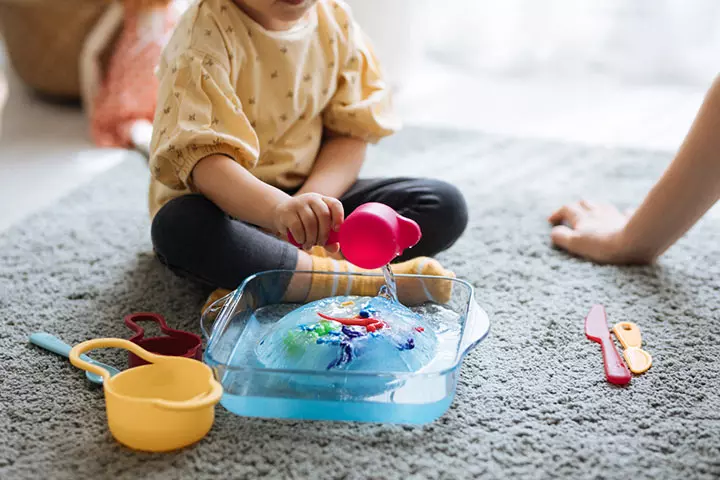
You will need
Small toys (preferably sea creatures like fishes, snails, sea horses, seashells), a freezer-safe container, a big container, salt (colored or normal), a shaker for salt, scoops, etc.
How to play
- Before the day of the activity, add water to the freezer-safe container, drop all the toys, and keep it in the freezer overnight.
- On the activity day, remove the ice block and keep it in the big container.
- Explain to your kids how water and salt can be used to melt the ice block.
- Give them a salt shaker and some warm water and ask them to find the toys by melting the ice.
- You can also provide some kid-friendly hammers, tweezers, etc., to break the ice and find the creatures inside.
If the activity is conducted among a group of kids, the one who collects the maximum number of creatures wins.
Developmental benefits
- Watching ice melt can help improve patience in children.
- Using tools like tweezers or salt shakers can help boost fine motor skills.
Safety tip
Ensure toys inside the ice are large enough to avoid choking risks.
 Point to consider
Point to consider14. Water painting
Kids enjoy mimicking their parents’ actions and love to pretend play. This activity with water is just what they need to have some fun and is best played outdoors.
You will need
A paint tray, paint rollers, paintbrushes, and a bucket.
How to play
- Fill water in the paint tray.
- Give the rollers to your kids and ask them to paint the floor or any wall.
- You can also give them some old furniture like chairs and tables and ask them to paint using brushes.
- Tell them to refill the paint tray once it is empty.
Developmental benefits
- Holding paintbrushes can strengthen hand muscles for future writing.
- Painting is a form of creative expression that can boost artistic confidence in children.
Safety tip
Use non-slip mats if playing on smooth surfaces to prevent accidental slipping.
15. Chalk and water painting
An extension of the water painting activity is the chalk and water painting. With some simple supplies, you can let your kids create magical paintings in your backyard or sidewalks.

You will need
Colorful sidewalk chalks, paintbrushes, and water.
How to play
Select a place for this activity. It could be your driveway, front patio, backyard, or any area with some stones so that you can use the chalk to draw on it.
- Once you decide the place, ask your kids to draw something random on the floor. It could be a rainbow, the sun, and a mountain, or geometric shapes that they can fill color in.
- Once the drawing is finished, take a paintbrush, dip it in water, and give a nice stroke on the drawing.
- Don’t wipe it too hard as it may take-off the chalk painting entirely. Just a slight stroke on the whole painting, and you’re done with a soft watercolor effect.
Developmental benefits
- This activity helps enhance color blending skills.
- It also helps refine fine motor skills.
Safety tip
Opt for non-toxic chalks that are safe for toddlers.
16. Baby bath pretend play
Another interesting activity that involves water is the baby bath pretend play. As kids like to imitate their parents, any play that involves them doing grown-up activities is of great interest to them.
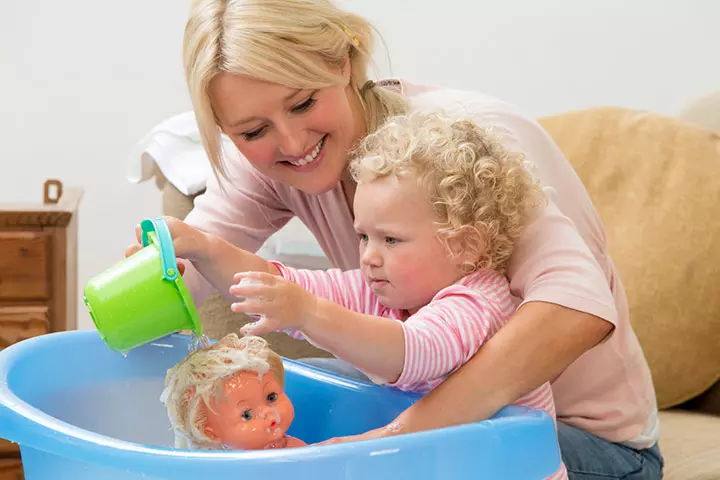
You will need
Hard-bodied plastic dolls (available in any second-hand store or online) or old plastic dolls, a large container as a bathtub, bath supplies like liquid soap, shampoo, towel, brush, paste, etc., small clothes for the dolls, water.
How to play
- Set up everything for the baby bath and leave it to your kids.
- Keep the dolls in the containers, add some water, and keep all supplies beside the tub.
- On a separate table, keep the dry supplies like towels, make-up items, clothes, etc.
Let your kids take the lead and see how they give a bath to the baby doll, followed by grooming. Stay with the kids as they play to ensure safety.
Developmental benefits
- It can encourage imaginative play and help children develop social-emotional skills by role-playing caregiving behaviors.
- Handling small bath accessories like a brush or a towel can help children develop fine motor skills.
- Narrating their actions while bathing and dressing the doll supports language development.
Safety tip
Ensure no sharp objects are included in the bath supplies to prevent accidental injuries.
17. Washing clothes
Kids and washing clothes? Why not? Pretend washing clothes is a realistic activity that they have to learn when they grow up, but more fun when it is all about playing with water.
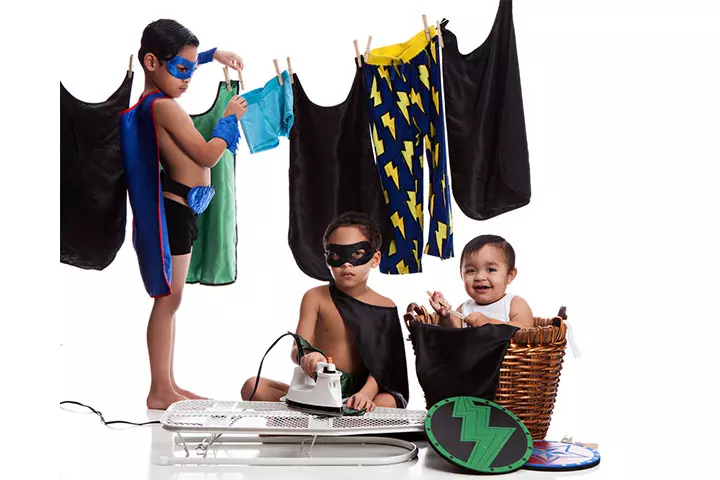
You will need
Doll clothes, small napkins, baby onesies, t-shirts, clothespins, laundry soap (mild), a rope, two to three buckets, and water.
How to play
- Set up everything, show the kids what needs to be done.
- As part of the preparation, tie the rope between two trees or posts, fill the buckets with water, and add detergent to one, keep the clothes handy.
- The kids need to dip the clothes in the detergent water, rub and squeeze them gently, and rinse them in plain water.
- They then need to squeeze them and place them on the rope and add the clothespins.
Developmental benefits
- Rubbing, squeezing, and hanging clothes can strengthen children’s hand-eye coordination and fine motor skills.
- Pretend play can help teach children responsibility and basic life skills.
- It can encourage problem-solving in children as they figure out the washing process.
Safety tip
Use mild, non-toxic detergent to protect sensitive skin.
18. Create an ocean
This is a sensory activity as the kids make it with their own hands.
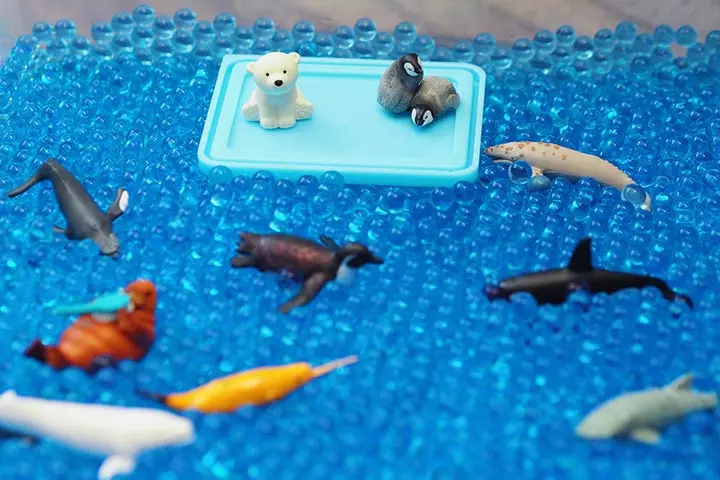
You will need
A sensory tub or a big container to fill water, small, round stones, pebbles, blue sensory beads, aquarium toys like fishes, sea horses, dolphins, and octopus
How to play
- Fill the container with some water, blue sensory beads that are flexible, and some pebbles.
- Show them some sample pictures of a sensory ocean bin and ask them to arrange it similarly.
- They can place the fishes and octopuses between the beads for showing ocean life.
Developmental benefits
- Playing with water, beads, and textures can stimulate sensory exploration in children.
- It encourages imaginative play as children create their ocean world.
- It also improves cognitive skills by learning about ocean creatures and habitats.
Safety tip
Ensure beads and small toys are age-appropriate to prevent choking hazards.
19. Float the boats
This is a basic activity in which you can involve both your babies and toddlers. With simple supplies, your kids can have unlimited fun in the water.
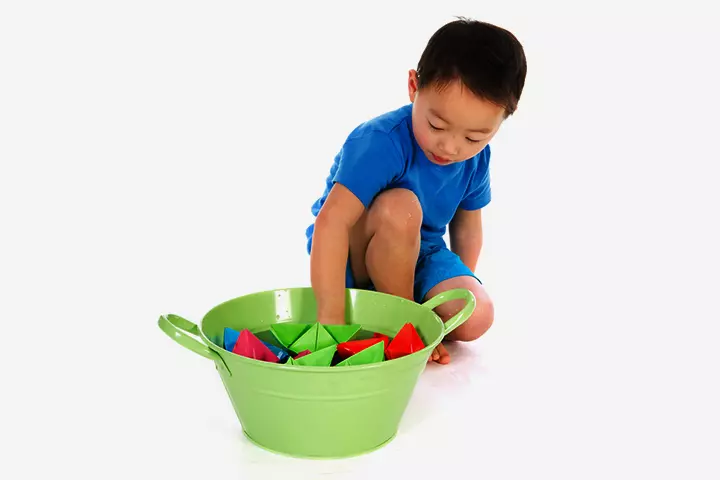
You will need
Some color papers, a container, and water.
How to play
- You can teach your toddlers how to make a boat using colored papers.
- Once your paper boats are ready, ask them to drop it in the water-filled container.
- If there is more than one kid, they can have a boat race and free boat sailing.
Instead of paper boats, you can also make use of empty juice cartons. Just add a sail to the boat made using some stiff cards cut in a triangle shape.
Developmental benefits
- Experimenting with floating materials can help enhance problem-solving skills in children.
- It helps develop fine motor skills in children through boat making and launching.
- It also introduces children to basic STEM concepts like buoyancy and water resistance.
Safety tip:
Use waterproof materials like plastic or waxed paper to prevent disintegration.
20. Fishing in the pool
If your babies love to spend time in the pool, this fishing activity would attract them and engage them for hours.
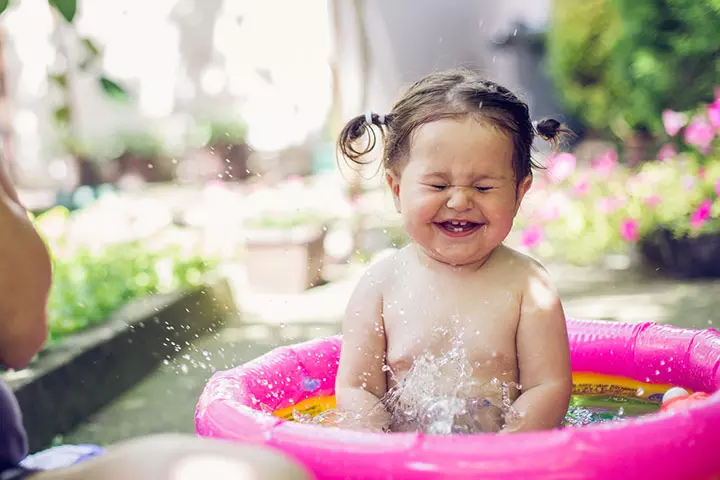
You will need
A baby pool or a big container, floating fish toys, bath toys, a net, and water.
How to play
- Fill the baby pool with water and add fish and other bath toys to it.
- Let your baby or toddler sit inside it.
- Give them the net and ask them to catch the fish.
- You can make the older kids stand outside the pool and catch the fish.
- If there are multiple kids, ask them to compete with each other to catch the fish.
Developmental benefits
- Scooping and catching floating toys can help improve hand-eye coordination in children.
- It can strengthen grasping skills essential for writing and self-care tasks.
- It can also boost focus and patience in a fun, engaging way.
Safety tip
Use non-toxic, floatable toys to avoid any hazards.
 Be watchful
Be watchful21. Color ball hunt
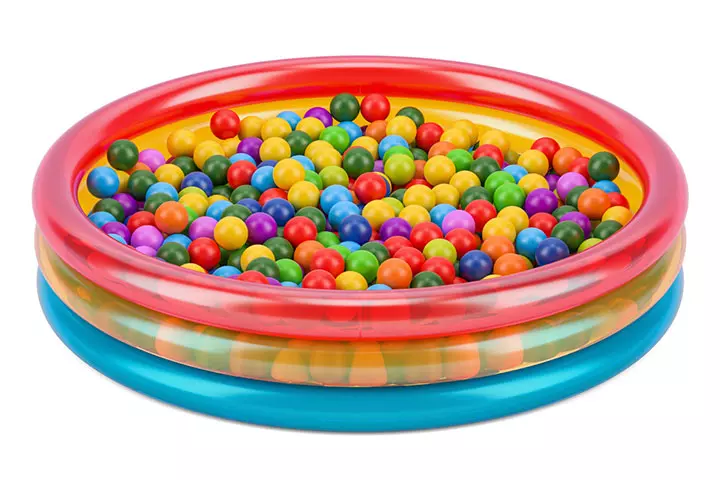
This is similar to fishing in the pool but involves more color sorting. Water and color are two kids’ favorites and hence would appeal to them.
You will need
Colorful water balls, a big container to fill water, colored tubs, scooper or net, and water.
How to play
- Fill water in the tub about one-inch deep and add the color balls to it.
- Keep the color containers next to the water tub.
- Give the scooper or net to your kids and ask them to pick up each ball and keep it in the same colored container.
Developmental benefits
- It can promote color recognition and sorting skills.
- It can also develop hand-eye coordination and grasping abilities.
- Children can learn teamwork and problem-solving through group play.
Safety tip
Ensure the playing area is dry enough to prevent slipping.
22. Spray painting
Spray painting involves colors and water, making it appealing for the little one.
You will need
Spray bottles, liquid watercolors, large drawing paper, easel, or something to keep the paper on the floor.
How to play
- Fill the spray bottles with different color water.
- Spread the drawing paper on the floor or fix it on the easel.
- Give the spray bottle to the kids and ask them to spray it over the paper.
- Ask them to draw different patterns as they wish.
Developmental benefits
- Squeezing spray bottles can help strengthen fine motor control in children.
- It promotes creativity and artistic expression.
- Children learn cause and effect as they see how colors blend.
Safety tip
Use washable, non-toxic paint to prevent stains and skin irritation.
23. Pretend dishwashing
We’ve said enough about how much kids like to imitate grown-ups. This is another such activity that would excite kids.
You will need
Water containers, sponges, liquid soap, kids’ kitchen set, and a towel.
How to play
- Fill two containers with water and add liquid soap to one container.
- Give the kitchen set to your kids.
- Ask them to clean vessels in the liquid soap water and then in the plain water.
- Once they’re done with all the vessels, they can wipe them clean with the towel.
Developmental benefits
- By mimicking real-life tasks, children get to experience adulting.
- Scrubbing and rinsing motions can help improve hand-eye coordination.
- It enhances problem-solving skills as children figure out how to clean effectively.
Safety tip
Use child-safe soap that will not cause irritation if touched or splashed.
24. Glue bottle water transfer
If you want to improve your kids’ fine motor strength, this is an exciting activity involving empty glue bottles.
You will need
Empty glue bottles, a water container, small plastic cups.
How to play
- Fill the water container with water.
- Give the glue bottles to your little ones.
- Ask them to fill the glue bottles by dipping them in water and squeezing them.
- Once the bottles are filled, they need to empty them in the plastic cups placed next to the container.
- They need to repeat it until all the cups are filled.
Developmental benefits
Squeezing the glue bottles to fill and empty them helps strengthen children’s muscles in the hands, arms, and wrists making it easy for them to hold pencils while writing.
Safety tip
Ensure children don’t drink or squirt water at each other’s faces.
25. Water gun learning activity
Here is a learning activity that includes water.

You will need
Water guns, chalk, or window markers.
How to play
- If you’re using window markers, write something your kids are familiar with, say letters or numbers on each window pane. If you’re using chalk, you can do the same on any wooden floor or stone flooring.
- Now call out one of the letters or the numbers you have written and instruct your kids to aim from a distance, squirting the water gun on it. They need to completely erase the letters to complete the activity.
Developmental benefits
- Squeezing water guns can enhance hand strength.
- Children can learn letter and number recognition in a fun, interactive way.
- It can help develop aiming and precision skills.
Safety tip
Ensure kids aim at targets, not faces.
26. Summer sensory bin
You will need
- Large plastic bin
- Rice or colored pasta
- Seashells, toy shovels, and mini beach toys
How to play
- Let your kid take charge of filling the bin with the sensory stuff.
- Now, let your little one dive in. Encourage them to scoop, pour, and feel different textures.
- Spark their imagination by asking them to hide little treasures or build tiny beach scenes.
- As your kid dives into this sensory exploration, they will not only enjoy feeling textures but will also be let loose their creative side.
Developmental benefits
- Varied textures promote tactile exploration in children.
- It can help develop imagination and storytelling as kids create beach scenes.
- It can also improve fine motor skills through scooping, pouring, and arranging objects.
Safety tip
Use large items to prevent choking hazards.
Benefits Of Playing In The Water For Babies And Kids
You may worry that water play could create a mess, or that your child might catch a cold when they play with water. However, water play could be beneficial when indulged in moderately and occasionally.
- Water games for kids could help them develop sensory skills.
- Activities like lifting a mug of water, filling bottles, and even throwing a water balloon can improve hand-eye coordination as well as fine and gross motor skills.
- Holding objects like containers, sponges, spray bottles, etc. can strengthen their hand muscles, enabling them to hold the pencil and write well later.
- Water play allows them to explore and find creative ways to solve problems, thus developing their curiosity and critical thinking skills.
- Kids learn about water and its various forms like ice and mist.
- Learn new words related to water, ocean, and aquatic creatures.
- Children also learn about scientific concepts such as buoyancy, sinking, and floating.
- Group activities for toddlers involving water can teach them about team play and cooperation.
Frequently Asked Questions
1. How to promote sensory play with water in children?
There are many ways to use water for sensory play. You may experiment with the waters’ temperature by shifting them to cool, warm, and normal modes between plays. Adding different materials could also promote sensory play in children. Add items of various textures to the play like slime, sand, ice, or soap.
2. How do I introduce water play to my toddler?
Before introducing your child to water play, ensure they are not afraid of water. You may know this by observing the way they behave during their baths. If they have hydrophobia, understand the cause and seek a therapist’s help. On the other hand, if they enjoy playing with water, you can initiate the fun by using a sprinkler to spray water on them. Encourage them to play in mini children’s pools by placing their favorite water toys in them. Join them in water games to make them feel more secure.
3. How can parents introduce water safety habits to their babies and toddlers?
By regularly monitoring their activities in the water, training them to swim, using the proper flotation devices, creating boundaries when in water, and educating them about the risks associated with the help of examples or visual aids, parents may help their children develop good water safety practices.
4. What types of water toys are appropriate for babies and toddlers?
Various water toys can be appropriate and engaging for babies and toddlers during water activities. These may include sponges, floating toys, spray bottles, plastic bottles, measuring cups, dolls, plastic sea creatures, etc. (4)
Engaging in water activities for toddlers is a great way to help your little one cool down on a hot summer day. Water activities offer a form of sensory play, improve their hand-eye coordination and motor skills, promote early scientific exploration, and help expand their vocabulary by introducing them to new words. Activities such as garden soup, water beads sorting, or float and sink require minimal tools and can thus be easily organized. However, ensure you take the appropriate safety measures while your toddler engages in water activities. Keeping the water level low and supervising your children at all times can help ensure their safety.
Infographic: Fun Summer Water Activities For Children
Now that summer’s here and your children are on their vacation, take this opportunity to spend more time with your little ones. The summer water activities in the infographic below will help you keep the summer heat at bay and let you have an enjoyable time with your children.
Some thing wrong with infographic shortcode. please verify shortcode syntaxIllustration: Safe & Fun Water Activities For Toddlers And Preschoolers

Image: Stable Diffusion/MomJunction Design Team
Bring the fun of water play indoors and outdoors with these 10 easy ideas! Get creative and explore the possibilities of water play with your kids.
Personal Experience: Source
MomJunction articles include first-hand experiences to provide you with better insights through real-life narratives. Here are the sources of personal accounts referenced in this article.
i. Coloured water activity – a colour mixing experiment for preschoolers.https://happyhooligans.ca/rainbow-water/
References
- Importance of pretend play.
https://centerforparentingeducation.org/library-of-articles/baby-through-preschool-articles/importance-of-pretend-play/ - The importance of young children asking questions.
https://www.wslhd.health.nsw.gov.au/ArticleDocuments/2243/Young%20children%20asking%20questions%2025-11-2018.pdf.aspx - Drowning Prevention for Curious Toddlers: What Parents Need to Know.
https://www.healthychildren.org/English/safety-prevention/at-play/Pages/Water-Safety-And-Young-Children.aspx - Materials/Equipment List for Infant and Toddler Child Care Centres
https://www.gov.mb.ca/education/childcare/resources/pubs/equipment_infant_toddler.pdf - Science Concepts Young Children Learn Through Water Play.
https://www.hookedonscience.org/files/Science_Concepts_Young_Children_Learn_Through_Water_Play_Carol_M_Gross.pdf
Community Experiences
Join the conversation and become a part of our nurturing community! Share your stories, experiences, and insights to connect with fellow parents.
Read full bio of Dr. Maymunah Yusuf Kadiri
Read full bio of Harshita Makvana
Read full bio of Rohit Garoo
Read full bio of Nisha Bharatan







